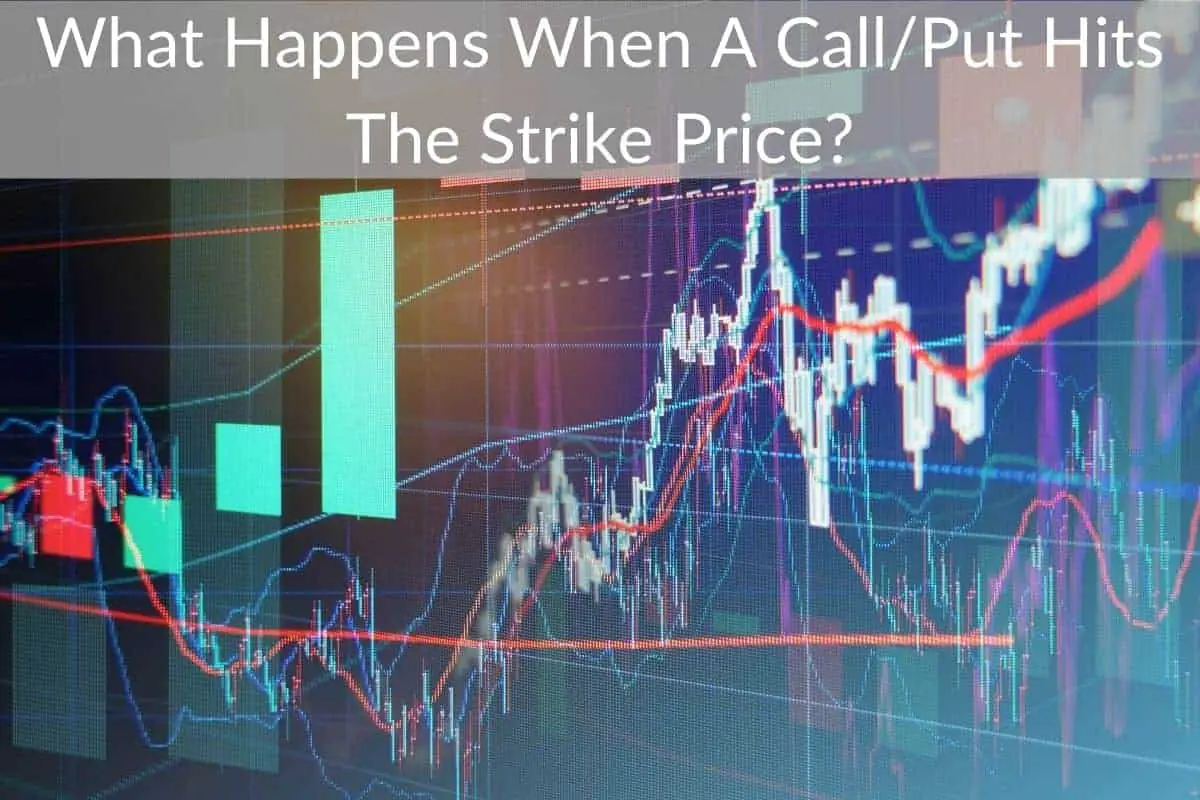Table of Contents
*This post may contain affiliate links. As an Amazon Associate we earn from qualifying purchases.
The relationship between a contract’s strike price and the underlying asset’s market price is a must-know for anyone looking to invest in the derivatives market. In addition to determining the value of your call/put option, it’ll help you decide whether to exercise your option as its expiration date approaches.
If you’ve been struggling to understand this relationship, this post has you covered.
When a call/put hits the strike prices, the price of the underlying stock equals the strike price, meaning the option is at the money. Although the call goes from being out of the money to at the money nothing else really changes.
A call at the strike price will not be exercised (if it’s on the expiration date) and nothing different happens either. The option will become more valuable as the price rises up to and through the strike price but that doesn’t change when the option hits that number.
Read on for some more details about the strike price as I will try to explain some of the stock market jargon above and delve deeper into what it means when a call/put option hits the strike price.
What To Do When Your Call/Put Option Reaches the Strike Price
When a call/put hits the strike price, it’s at the money, meaning the share price of the underlying stock equals the strike price. What effect does this have on the investor?
Let me explain the case for both call and put positions.
A Call Option
When you purchase a call option, you acquire a derivatives contract that gives you the right, but not the obligation, to purchase shares of the underlying stock at the strike price on or before the expiration date.
You purchase such a contract hoping that the underlying stock’s market price will go up, in which case you’d make a profit from exercising or selling the option.
So the moment the strike price equals the price of the underlying stock, your contract has no intrinsic value. Why? Because there’s no point in exercising the option when you can get shares of the same stock at the same price as the strike price.
Essentially, your contract is worthless, and exercising it would mean incurring unnecessary transaction costs.
If your call option hits the strike price when you still have a significant amount of time before the expiration date, you may be better off holding onto it or even selling it at a profit.
Maybe the underlying stock’s price will go high enough to break even, allowing you to salvage the premium you paid for the option.
In the best-case scenario, you’ll end up being in the money.
However, if your call option hits the strike price on the expiry date, you’ll be better off letting it expire. In this case, you’ll only lose the premium you paid for the contract.
A Put Option
A put option is a similar contract to a call option, except it gives you the right, but not an obligation, to sell shares of the underlying stock at the strike price on or before the expiration date. Typically, you’d purchase this kind of derivatives contract when you’re expecting the market price of the underlying stock to go down.
So when a put option is at the money, it, too, doesn’t have any intrinsic value because exercising your right would mean selling shares of the underlying stock without any gain.
In fact, you stand to lose the premium you paid for the contract if it expires at the money. And if you factor in transaction costs of exercising the option, it becomes clear that a put option that’s at the money is better off left to expire.
Defining Key Terms
We have looked at what happens when a call/put hits the strike price. Now, let’s go over the key terms so that you know what to look at when you are researching which options to use and how to use them for your portfolio.
Intrinsic Value
Generally, an asset’s intrinsic value is its worth. When it comes to options pricing, it denotes the difference between an option’s strike price and the prevailing market price of its underlying asset.
However, an option’s intrinsic value calculation differs based on whether it’s a call or a put. Here are two examples to demonstrate this:
- A Call option: If a call option has a strike price of $15, and its underlying stock has a market price of $25 per share, this option’s intrinsic value would be $10 ($25-$15). Notice that it’s the underlying stock’s price minus the strike price.
- A Put option: If a put has a $20 strike price and its underlying stock’s price is $14 per share, its intrinsic value is $6 ($20-$14). Notice that in this case, it’s the strike price minus the underlying stock’s market price.
Whether it’s a call or put, a negative result in the above calculations would indicate that the option in question has zero intrinsic value.
Moneyness
Moneyness is most commonly used to describe call and put options, although it may come up when talking about other derivatives such as swaps, futures, and forwards. It describes the relationship between an option’s strike price and its underlying asset’s price at the current state.
In other words, it refers to an option’s intrinsic value.
Moneyness is a strong indicator of whether an investor would profit if they exercised an option immediately. Depending on the result, that option would be described as “In the money”, “At the money”, or “Out of the money”.
If exercising an option right away would result in a loss, that option is said to be out of the money.
Meanwhile, an option that would result in a gain if exercised is described as one that’s in the money. As for “at the money”, it refers to a situation where an option’s strike price is identical to the price of its underlying asset.
Typically, only an option that’s in the money has intrinsic value. At the money options and their out-of-the-money counterparts have no intrinsic value.
Final Thoughts
As we’ve seen, both call and put options have zero intrinsic value when they hit the strike price of an option. Exercising either option at this particular point is pointless because you won’t realize any gains. Instead, you’ll incur unnecessary transaction costs.
In short, the best thing to do when a call/put option hits the strike price is nothing.
You can certainly sell the call or put if the value has increased (or you feel it won’t move much further) but you shouldn’t exercise an option that is at the money.

